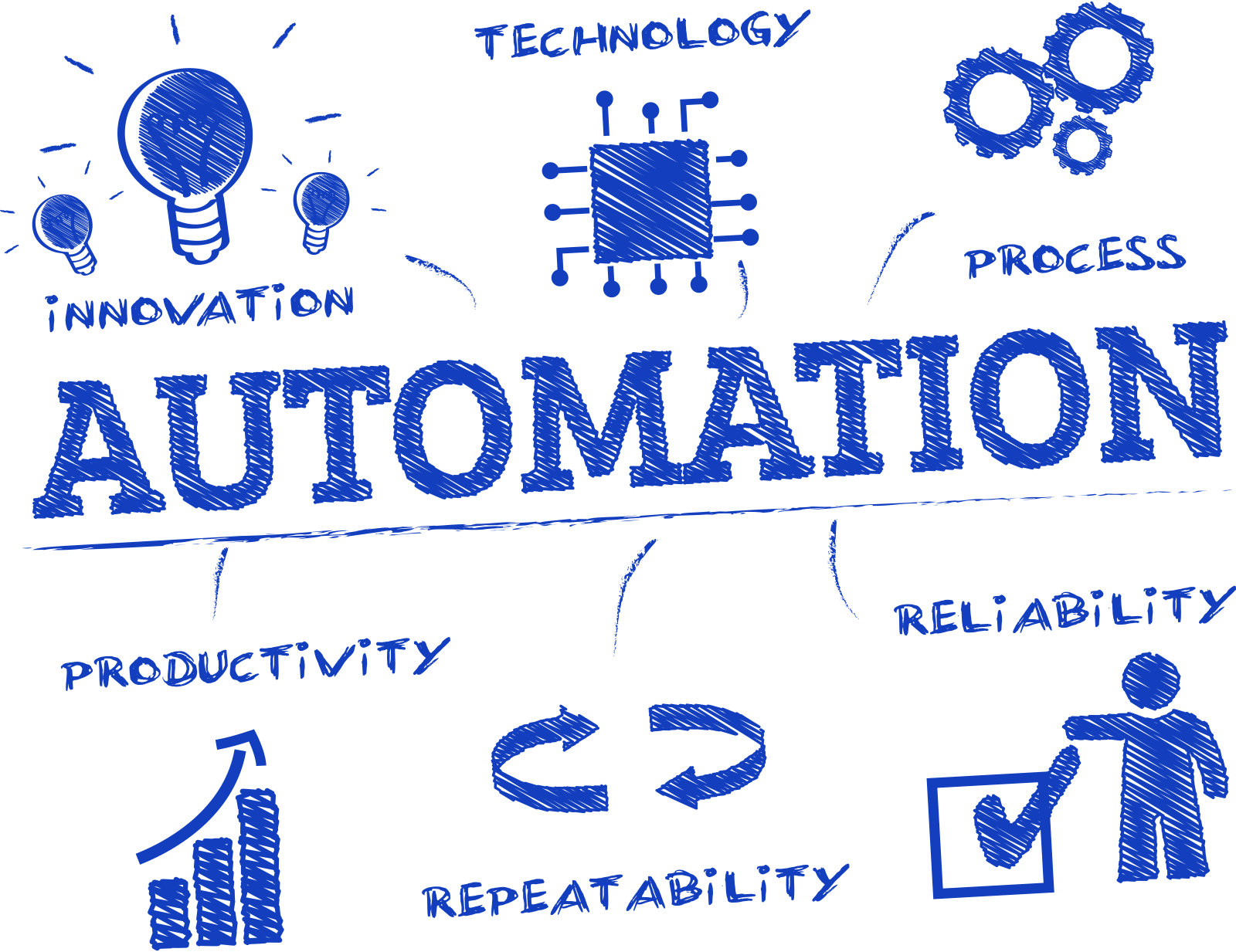
by Sophia Riley | Jul 25, 2023 | Automation
Employees waste a lot of time doing routine tasks in their everyday sales work. Sales order automation eliminates human mistakes, delayed delivery, customer unhappiness, and many issues. An ideal order fulfillment for businesses entails processing orders promptly, meeting customer expectations, minimizing invoice exclusions, and limiting item packages through packaging.
With an idea of what order management is about, we can identify some common problems businesses may face when using outdated systems or operating manually.
Challenges in sales order fulfillment
Delays in Order Fulfillment
The increase in the orders online merchants receive is a common reason for extended order fulfillment durations necessitating businesses to find ways of fulfilling orders fast while guaranteeing consumer satisfaction.
It is difficult to balance the buyer’s expectations for quick shipping and an excellent shopping experience. Sales order automation is a solution to making the process seamless.
Achieving fast, efficient, and transparent Processes
Besides the increased volume of orders, sales order automation seeks to achieve fast, efficient, and transparent processes. A manual order processing procedure will likely lead to errors that negatively affect delivery.
Managing inventory is essential for the effective execution of orders: Businesses risk losing consumers if they experience recurrent shortages of goods, especially for commodities with a high turnover rate. The trick is to monitor the stock levels to ensure adequate inventory to satisfy demand.
Communication
To fulfill customer requests effectively, there need to be constant updates to the buyer about the status of the orders. Any communication breakdown might result in delays and lost business.
Business Growth through Sales Order Automation
By automating sales order operations, your company will lower human interaction, which is a major cause of error-prone sales processes. It makes it easy for customers to order without relying on human interaction.
It involves investing in a system to automate order collection, processing, support sales, and provide customer support. Modern software offers more than previous automation solutions and companies must invest in the right technologies.
A sales order automation program helps with:
- Taking orders from various channels.
- Quick data input.
- Accurate data to process and validate client requests.
- Correct order fulfillment.
- Providing customers with order updates.
- Record keeping for compliance and audits.
Manual and routine tasks can drive up operating expenses. The automation system handles incoming purchase requests from an end-user portal or other channel. It retrieves and verifies the information before completing the requests. Investing in an integrated system allows companies to streamline the workflow and order handling.
Below are five ways automation can help your business grow;
Costs Reduction
Automating data collection increases productivity and reduces the time workers spend typing information into the system database freeing up employees to engage in other value-adding tasks. Still, it enhances the accuracy of order processing and saves money.
Human errors have significant repercussions. Removing costly mistakes from the order fulfillment operations and optimizing the company’s processes enables staff to perform jobs more quickly. Enterprises save money due to the automatic completion of tedious, recurring tasks.
Sales order automation supports company growth through cost reduction, which increases profits and shareholder wealth. It should be a significant motivation for a digital transformation project.
Better Cash Flow
Businesses can handle orders more rapidly and increase productivity through extensive sales order automation. Processing requests and billing customers is faster when using technology, translating to better cash flow.
When customers submit their requests electronically, staff will handle them more quickly thanks to the shortened queue resulting from quicker order processing. The system invoices customers as soon they finish with order input which aids in maintaining a steady and precise cash flow.
Strategic Planning and Adapting to Market Needs
Unlike outdated methods like spreadsheets for order management, automation gives enterprises more control over their data. Executives can use key performance indicators to evaluate achievements against the company objectives ensuring businesses attains their set targets which is a critical factor for company growth.
Sales order automation aids in forecasting future business needs and consumer demands. It is a strategy to help organizations adapt to an ever-changing business environment and market. They can make more informed decisions due to enhanced information access.
Customer satisfaction
The client experience is a major benefit of sales order automation, as staff can process and complete client orders more quickly and precisely while keeping them updated. Quick turnaround times are possible through digitization and data-driven service. It enhances the client experience and assists businesses in standing out in a crowded marketplace.
In today’s world, consumers value the shopping experience and will be loyal where they feel satisfied, meaning continued business. In addition, happy clients will refer others with similar needs to the company, which grows their clientele and increases revenue.
Established brands understand the value of customer relationships and take advantage of each opportunity to strengthen them through personalized communications. Still, a vendor can market their products and brands through messages updating customers about their order delivery.
It makes Companies more Agile
Thanks to smart technologies, managing order cycle times, expediting delivery, knowing the best-selling items, and identifying high-priority orders is now possible. RPA will speed up orders, reduce mistakes, and increase employee happiness. By overcoming the limitations of traditional sales order processing, cognitive automation enables companies to guarantee an exceptional client experience while generating more revenue.
Businesses have a feasible option thanks to robotic process automation (RPA), which combines artificial intelligence (AI) and removes the laborious, monotonous procedures that drive up operating expenses. This innovative technology can instantly process incoming sales orders from a company’s email inbox or client site. It can also extract and validate data from customer requests.
Final Word
Automation is a critical part of digital transformation initiatives as it reduces the amount of unnecessary labor and directs your resources toward essential goals.
With the appropriate automation solutions, you can improve staff performance, improve collaboration among teams, and boost overall customer happiness. Ensure to hire experts to help with business processes automation to get the best outcome.

by Sophia Riley | Jul 20, 2023 | Sales Order Processing
Prioritizing sales order processing is critical for companies to ensure customer satisfaction. This process can also help with inventory management as well as revenue generation. But what many people need to be made aware of is that sales order processing can be equally stressful and overwhelming. That’s because you have to deal with demanding customers, crazy deadlines, high orders, complicated procedures, and so much more.
The process can take a toll on the sales order processing team if not handled properly. That’s why organizations should put in place measures to help sales order processing teams cope with the stress and pressure of sales order processing.
If you don’t have measures in place in your organization to cope with stress and pressure in sales order processing, worry not, as we have got you covered. This article discusses various ways to cope with the stress and pressure associated with sales order processing. Let’s delve into them.
- Plan and prioritize
If you want to cope with stress and pressure in sales order processing, one of the best things you can do is to set goals and prioritize your tasks. Review your orders, deadlines, and objectives first thing in the morning, then make a realistic calendar that will let you prioritize the most urgent and crucial work first. Use calendars, reminders, and checklists to keep track of your work and ensure you don’t forget any important information or deadlines. Additionally, be responsive to changing circumstances and consumer needs and modify your plan as necessary.
- Avoid multitasking
Research has repeatedly shown that humans are not excellent multitaskers, even though we multitask daily. According to Bryan College, multitasking causes productivity losses, costing businesses nearly $450 million annually. Sales order processing teams may be more pressured to close the gap when businesses suffer from severe productivity losses.
Multitasking may negatively impact IQ and cognitive function on an individual basis. Long periods of task switching may cause your routine chores to feel harder in the future, which doesn’t do much to lessen feelings of stress. One task at a time concentration can increase productivity and quality of work, which is beneficial for you.
- Communicate clearly and collaborate.
Working collaboratively with coworkers, bosses, and customers is another technique to manage the pressure and stress of completing sales orders. Provide your clients with accurate and timely information about their orders, statuses, and problems clearly and respectfully. Respond to their comments, inquiries, and worries, then address them professionally and empathetically. Work together with your coworkers to share workload, concepts, and solutions. Ask your top management for assistance when you run into issues or challenges. You should also report any mistakes or delays as soon as you can.
- Never stop learning and strive to improve.
Utilizing your experiences to improve allows you to deal with pressure and stress in the sales order processing process. Make the most of any chance to pick up new skills, information, and best practices to enable you to carry out your duties more successfully and efficiently. Utilize the opinions of your bosses, coworkers, and clients to determine your strengths and places for development. Celebrate your wins and accomplishments while taking responsibility for your blunders and failings. Use them as learning opportunities to improve and advance as a sales order processor.
- Learn how to resolve conflicts effectively.
You may occasionally encounter circumstances when you must settle disputes with your clients, suppliers, or coworkers. For instance, you could have to handle client grievances, order cancellations, delivery holdups, or inventory shortages. You need to be skilled at negotiating and resolving conflicts if you want to handle the pressure and stress of processing sales orders. To develop a solution that satisfies your and their needs, try to comprehend the other party’s viewpoint, interests, and needs. Focus on establishing common ground and developing rapport and trust rather than transferring blame, disputing, or intensifying the issue.
- Automate as much as you can
You need to free up staff time for more important activities. Automation involves giving repetitive and boring tasks to computers so they may complete them more quickly and precisely. In addition to that, this will reduce the pressure and stress that comes with handling boring and annoying tasks.
- You might consider automating the following processes while processing sales orders:
- Receiving order confirmations and monitoring inventory levels
- Increasing sales orders after confirming inventory
- Whenever fresh stock is necessary, suppliers are sent purchase orders.
- Raising a sales invoice for the consumer to be printed or emailed
- Contacting the relevant warehouse manager with picking requests
- Updating stock levels based on the products that are scanned and removed from shelves
- Setting up pick-ups and calculating shipping expenses
- Contacting the client when there is a delay or at crucial stages of the process
Taking these tasks off the team’s plate will help ease stress and pressure in sales order processing.
- Take time to relax and recharge.
Finally, taking time to unwind and refuel your body and mind is one of the most crucial things you can do to deal with the pressure and stress of processing sales orders. You must learn good coping mechanisms for stress because it can harm your performance, health, and well-being. To relieve stress and clear your mind, take regular daily breaks to stretch, breathe, or practice meditation. After work, participate in activities like your hobbies, favorite sports, or socializing. You keep your health and vigor, get enough sleep, eat well, and exercise frequently.
Wrapping it up
When you reflect on the pressure sales order processors face due to the complex procedure, it is no mystery where the stress and pressure come from. A stressed sales order processing team isn’t good for business. Ease the stress and pressure on sales order processing employees by implementing the above measures. The result will be happy employees and satisfied customers.

by Sophia Riley | Jul 18, 2023 | Sales Order Processing
No matter how much you try to offer the best customer service, you will always encounter dissatisfied customers. You will also deal with returns as they are inevitable too.
But the unfortunate part is that these complaints and returns can be detrimental to your business, especially in this digital era where people can share anything on social media. It can damage the solid reputation you have struggled to build over the years you have been in operation.
You need to find ways to handle and reduce the risk of returns and customer complaints. Sales order processing [SOP] can help you reduce and deal with them effectively.
This article discusses SOP, why it matters, and how to use it to reduce returns and risks. So, without wasting more time, let’s get started.
What is sales order processing?
Sales order processing is the procedure for managing customer orders from the point of order placement till the customer receives the goods or service. Several phases are included in the SOP, including order entry, confirmation, invoicing, delivery, and payment. SOP is significant since it impacts client retention, loyalty, and satisfaction. Your reputation can be improved, repeat business increased, and good word-of-mouth generated with a seamless and accurate SOP. On the other hand, a subpar SOP can cause issues, delays, customer unhappiness, and legal issues.
How to use SOP to reduce returns and complaints
Now that you understand what SOP is all about, let’s see how to use it to reduce complaints and returns.
An effective, dependable, and consistent SOP is crucial to preventing returns and complaints. Use a clear and thorough order form that includes all pertinent information, such as product specs, quantities, prices, delivery dates, and contact information, to improve your SOP.
Send the customer a confirmation message or email with the order details and tracking information as soon as possible to confirm the order. Continually update the consumer on the progress of their order and follow up with them.
Set up a quality control system to inspect goods before shipment and pack them safely to prevent damage during travel. Provide invoices that are accurate, unambiguous, and consistent with the terms of payment for the order. Finally, deliver the goods promptly and in good condition and ask the consumer for delivery confirmation.
How to deal with returns and complaints when they arise
As already stated, no matter how much you try to offer the best customer service, you may still have to deal with returns and complaints from clients. Responding promptly and courteously to the client’s issue and apologizing for any difficulty or dissatisfaction caused are crucial for ensuring a successful sales performance and maintaining customer loyalty. Additionally, it’s critical to pay attention to consumer input, comprehend their viewpoint, provide a just and reasonable answer that suits their demands, and then contact them again to confirm the solution. To further help prevent similar problems from happening in the future, take the time to reflect on the experience and pinpoint the source of the problem.
It is no secret that returns and complaints can greatly impact your sales performance. That’s why you need to reduce them as much as possible. How can you measure the impact of returns and complaints? The best approach would be to use key performance indicators [KPIs]. These KPIs can monitor the frequency, cost, and impact of returns and complaints. Here are the most important KPIs you can use:
- The return rate (the percentage of goods returned by customers)
- Complaint rate (the percentage of orders causing complaints from customers).
- Resolution rate (the percentage of returns and complaints that your SOP team has resolved effectively).
- Resolution time (the average amount of time it takes your SOP team to resolve a return or complaint).
- Customer satisfaction (customers who express satisfaction after a return or complaint is resolved).
- Customer retention (the percentage of customers who make a purchase even after a complaint or return).
You can evaluate the success of your SOP and identify areas for improvement by keeping an eye on these KPIs.
How SOP can boost your reputation and customer loyalty
Sales Order Processing may improve your reputation and client loyalty, preventing and managing returns and complaints. Making SOP more distinctive by including the customer’s name, preferences, and background will strengthen their sense of loyalty to your company. You can increase their satisfaction by exceeding their expectations and providing value through free samples or vouchers. They may feel more engaged if you solicit their opinions and suggestions after each order, and they may feel more valued if you give them rewards like loyalty programs or discounts. Their confidence in your brand may increase if you display encouraging comments and testimonies from satisfied clients. These are all powerful approaches to implementing SOP to improve your reputation and client loyalty.
Final thoughts
How you handle compaints determines whether you’ll retain customers. Other than implementing Sales processing orders, you can handle these issues in other ways. For instance, you can solicit customer feedback, upgrade your product’s quality, etc.
Regarding customer complaints, you need to understand the root cause and see how you can handle it without making the customer feel undervalued. This way, you can reduce returns and complaints and end up with satisfied and loyal customers who can help you grow your company because customers are the backbone of any company!

by Sophia Riley | Jul 13, 2023 | Oracle Apex
APEX, or Application Express, is a software development tool built by Oracle, one of the leading database management and development brands. It is used to create, run, and deploy database applications. Oracle Application Express (APEX) is a free, easy-to-use tool to help you quickly build and deploy database-driven applications. You can use APEX to create and publish your custom applications or build on top of our prebuilt widgets and components library. If you use Oracle Application Express (APEX) for your development, you’ll want to upgrade it from version 4.2.1 to 5.0.
The steps below will guide you through the process of upgrading an existing APEX application to version 5.0;
- Assess the current state
The first thing you need to do is assess the current state of your application. Is it working? Are there any bugs? What are the features? How often is it used? What kind of data does it hold? Knowing these answers will help you decide which steps in this guide are relevant. With that information, you can identify the areas where you want to spend most of your time improving performance and user experience. Also, knowing how much time you have will help you prioritize what needs improvement most urgently.
- Review documentation
There are several great resources for learning about Oracle Application Express (APEX), including books, blogs, videos and tutorials on the Oracle Learning Library website. It would help if you started by reading through some of these resources before making any changes to your application so that you’ll know what changes may affect other parts of your application and how they might be implemented differently depending on the platform and version of APEX.
- Perform a database backup
Ensure you have taken a database backup before upgrading your schema or performing any other database operation, such as importing data from another source or adding new tables or indexes. You should also ensure that all users are logged out from APEX when performing these operations so that no user-related objects exist in APEX after completing them.
- Test the upgrade in a non-production environment
After backing up your application, it’s time to test the upgrade in a non-production environment before moving forward with any changes to production systems. This aims to identify and fix any potential issues before they become problems for your users. Ideally, you could use an environment that looks similar to what your customers use so that they’re easy to identify and resolve when issues arise.
- Backup your applications
This is critical but often overlooked. Backing up your application before upgrading is the best way to ensure you can revert to the previous version if something goes wrong. You should also consider backing up the database, especially if it contains large amounts of historical or important information.
- Address compatibility issues
Before upgrading, it’s essential to determine if your Oracle APEX application is compatible with the new version of Oracle Application Express. The Upgrade Guide for each version has a section called Compatibility that lists known issues and workarounds for each release. You can also check the Compatibility Matrix in the Release Notes for more information about functionality added or removed since previous releases of Oracle Application Express.
- Plan for downtime
If you’re doing a significant upgrade, it’s best to take the application offline while the upgrade is done. This will give you time to ensure the promotion goes well before users return to their seats. If the application is mission-critical, consider using an automated deployment process that can be initiated remotely and tested in a sandbox environment before pushing it into production. This will help ensure that any issues with upgrades are found before they affect users.
- Execute the upgrade
There is no way around this step, so you should get it out first. Before you do anything else, ensure your upgrade scripts are tested and working correctly. The best way to test them is to run them on a development system set up with all of the same settings as your production system, including the database.
- Update your database schema
This may be necessary if you’ve changed the structure of tables or added new columns to existing tables during the development of your application. The easiest way to do this is to use an external tool that can compare schemas and tell you what needs to be updated for the schema change to work as expected with Oracle APEX 4 applications or whatever version number you’re upgrading from.
- Review application permissions
Now would be a good time to review your users’ permissions within the application and ensure they still match up with their roles and responsibilities within the organization. If any changes are required here, now is a good time to do it before deploying into production, where you might have more impact on other systems or applications due to changes in permissions.
- Monitor and support
Monitor your production systems for performance issues, look for unusual traffic patterns and see if any security issues affect your applications or databases. You should also make sure that there are no changes in the configuration settings of these systems that may affect them adversely, e.g., backups. If needed, hire a support team to assist you with these tasks while you concentrate on upgrading your application codebase and database schema.
- Protect against security threats
Security threats such as cross-site scripting (XSS) and SQL injection attacks can cause severe damage to your application if they cannot be detected and prevented in time. You should use appropriate measures to detect these attacks before they can cause severe damage to your database or other data sources your application or its users may access.
Conclusion
Generally, APEX is a compelling platform that can easily create applications without considering underlying development limitations. Understanding these steps will allow you or our team to confidently handle your upgrade and resolve any issues that may occur.

by Sophia Riley | Jul 11, 2023 | Sales Order Processing
Sales order processing systems are valuable resources for businesses handling customer orders. Your business may benefit from implementing an order processing system to make it more effective and profitable. To assess your business’s benefits, we’ll review what an order processing system is, its features and functions, and why your business can benefit.
What is a sales order processing system?
The sequence of events from customer ordering to product delivery is called sales order processing. The sales order processing impacts each step of the purchasing and order fulfillment, including quotes, monetary transactions, order picking, and logistics.
Any business selling goods or services to clients must execute sales orders. It entails gathering, verifying, and completing orders received through various methods, including online, by phone, or by email. A modern sales order processing system is a tool that streamlines and automates this procedure, cutting down on errors, expenses, and delays. In this article, we’ll examine some of the essential features and capabilities of a cutting-edge sales order processing system and how they might help your company. Let’s get started!
- Order management
From order entry to delivery and invoicing, a modern sales order processing system should be able to control the whole order lifecycle. Order verification, approval, distribution, selecting, packing, shipping, tracking, and billing are just a few of the processes it can automate. The system can also handle complex situations like backorders, incomplete shipments, returns, refunds, exchanges, and cancellations. Each order’s status and progress may be tracked and managed, and you can also receive notifications for any problems or anomalies.
- Integration with multiple sales channels
You should be able to integrate your multiple sales channels, including your website, e-commerce platforms, social media, and third-party marketplaces, with a modern sales order processing system. By doing so, you may gather and combine orders from various sources, reduce duplication, and synchronize inventory and pricing amongst channels. In addition, you may offer a consistent and smooth client experience, irrespective of how customers place their orders.
- Inventory management
To maximize your stock levels and availability, a modern sales order processing system should function as your inventory management system or integrate with it. Your inventory can be tracked and updated across sites, warehouses, or suppliers. Additionally, cycle counts, transfers, modifications, and replenishment can all be automated. You can increase your inventory accuracy and visibility while avoiding stockouts, overstocking, and obsolescence.
- Integration and customization
A modern sales order processing system should integrate seamlessly with the accounting, CRM, ERP, and WMS systems and other apps you use in your company. Utilizing the capabilities and benefits of each system and streamlining workflows, data, and processes within your organization can be done in this way. Your sales order processing system can also be customized to fit your unique business requirements and preferences, such as your industry, product category, customer base, or sales strategy.
- Return processing
An order processing system may integrate return management features to increase the effectiveness of return processing. This can help the employees overseeing any client returns about the return and inform them of any actions necessary to carry out the return for the customer. This can reduce the amount of time that staff spends on returns processing while also benefiting customers. A company may be able to analyze and pinpoint areas for improvement by using data on returns provided by an order processing system.
- Invoice processing
For billing consumers, invoices are a crucial document, and an order processing system might produce one for each order. The system’s organization makes it simpler for the business to locate an order and issue an invoice, or it can do it automatically for every purchase. Ensuring the company receives money from each customer might help organize the accounts and billing data for the company.
- Customer service
A modern sales order processing system can improve your ability to serve and satisfy customers. You can offer convenient and adaptable delivery alternatives in addition to quick and accurate order fulfillment. Additionally, you can contact your customers via chat, SMS, or email during the ordering process. They can receive order confirmations, shipping updates, tracking data, invoices, and requests for customer feedback. Additionally, you can give customers self-service alternatives like order status checking, order alterations, and return initiating.
- Security and scalability
A cutting-edge sales order processing system must meet your company’s needs even as it expands while remaining secure. It can manage high order, customer, product, and transaction volumes without sacrificing effectiveness or quality. It can also adjust to changing market trends, client requests, or legislative requirements by incorporating new features, services, or integrations. Additionally, it can use encryption, authentication, backup, and recovery techniques to safeguard your data and transactions from unauthorized access, theft, or loss.
- Report generation
By creating and analyzing reports on organizational performance, productivity can be significantly increased. Order processing systems that keep track of them at every stage can speed up the production of more thorough reports. Many order processing systems may generate reports and charts based on parameters entered by the user, such as the average processing time or the total number of orders sorted by day. These systems employ data already present from each order processed to generate an accurate report.
Final thoughts
The sales order process is crucial in businesses, especially those that sell goods. If you get it right, you will be able to reduce costs and make your customers satisfied. But if you get it wrong, you will not only increase your expenses, but you will end up with unsatisfied customers. This is where a sales processing order comes in. If equipped with the above features, it will help you streamline the ordering process, save you significant money in the long run, and help you retain your customers.





